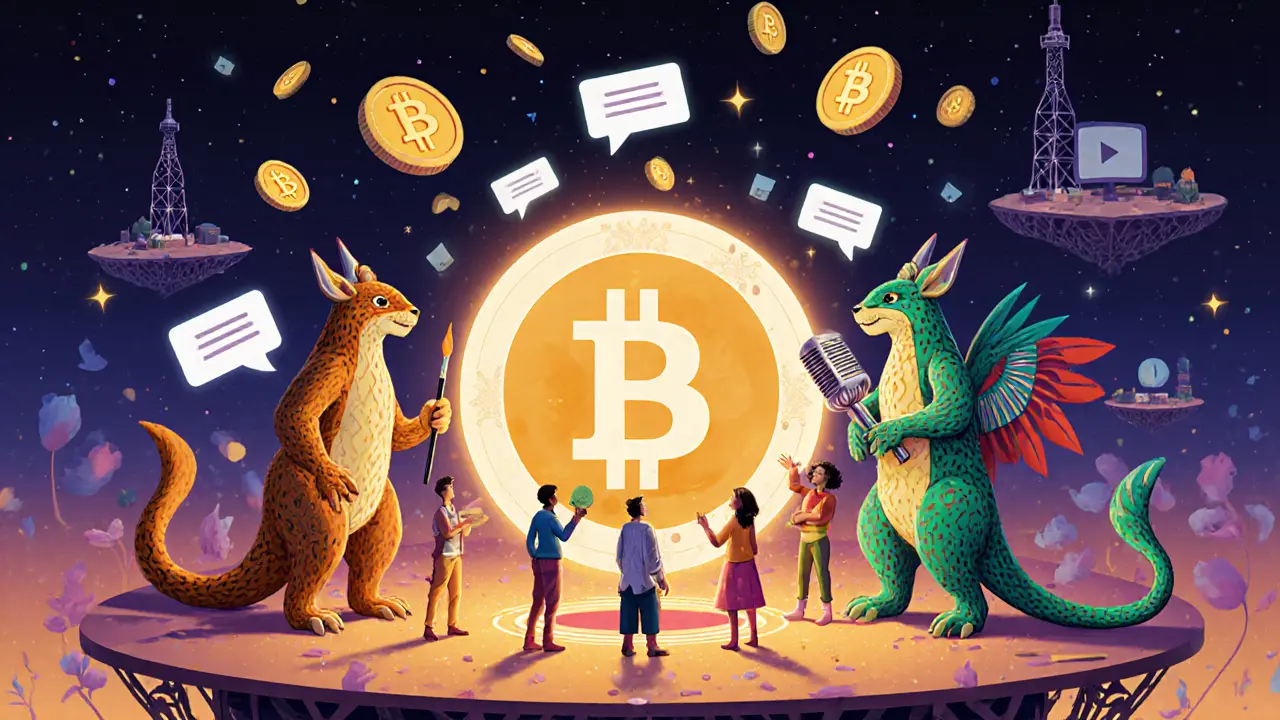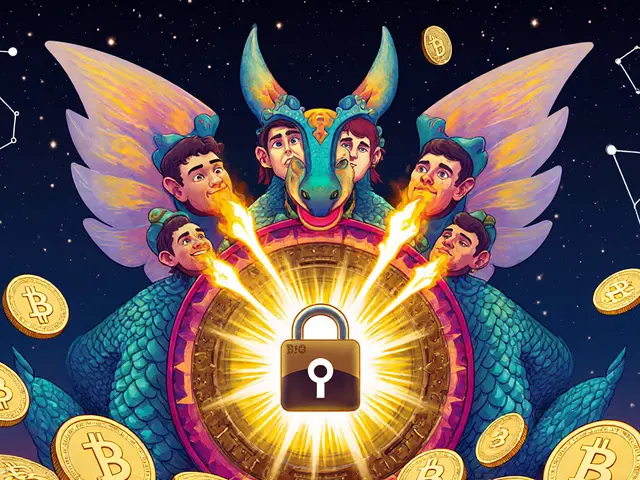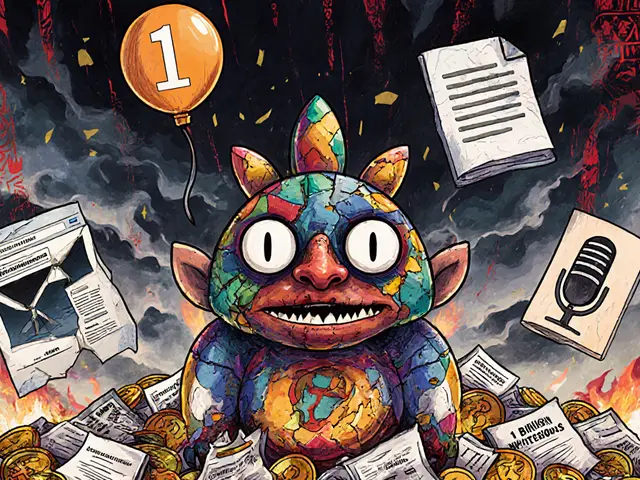JOY Token Value Calculator
Calculate how many JOY tokens you need to buy for a given amount of USD. Based on the current token price of $0.00048 per JOY (as of October 2023).
Joystream isn’t just another crypto coin. It’s a blockchain built to fix how video works online. Right now, if you’re a creator on YouTube or TikTok, you don’t own your audience. You don’t control your earnings. And if the platform decides to ban you, your content disappears. Joystream tries to change that. It’s a decentralized video network where creators keep full control - no middlemen, no censorship, no surprise algorithm changes. The JOY token is the fuel that makes it all work.
How Joystream works: A video platform without a company
Most video platforms are run by corporations. YouTube answers to Alphabet. TikTok answers to ByteDance. Joystream answers to its users. It’s built on a blockchain, meaning no single company owns it. Instead, the network is governed by people who hold JOY tokens. These users vote on upgrades, fund new features, and even get paid to help run the system. This is called a DAO - a Decentralized Autonomous Organization.
Creators upload videos directly to the Joystream blockchain. Every video, comment, and like is stored on the network, not on a server owned by a startup or tech giant. That means your content can’t be deleted by a corporate policy change. If you post a video about politics, religion, or controversial topics, it stays up - unless the community votes to remove it. And you’re not stuck with one monetization model. You can set your own rules.
What is the JOY token used for?
JOY is the native currency of the Joystream network. It’s not just for trading. It’s how the whole system stays alive. Here’s how it’s actually used:
- Payment for services: Creators can charge viewers in JOY to access exclusive videos, live streams, or behind-the-scenes content.
- Channel tokens: Viewers can buy special tokens tied to a creator’s channel. These aren’t JOY, but they’re backed by it. Owning them gives you voting power in that channel’s decisions and a share of its earnings.
- Governance: Holders can submit proposals to improve the platform - like adding new tools or changing fees. If enough people vote yes, the change gets built.
- Paid roles: Developers, moderators, and translators can apply to work on the platform. They get paid in JOY for their time.
- Patronage: Creators can set up automatic monthly JOY payments from fans, like a Patreon built into the blockchain.
Unlike Bitcoin or Ethereum, JOY isn’t meant to be a store of value. It’s meant to be used - like a digital tool for creators.
Token supply and distribution
There are 1.11 billion JOY coins total. About 1.09 billion are already in circulation as of late 2023. That means almost all the coins have been released. Unlike many crypto projects that hold back tokens for years, Joystream has been releasing coins steadily since its 2022 launch - about one every 6 seconds. The coins were distributed across seven groups:
- Community Founding Members
- Jsgenesis Founding Members
- Investors
- Membership Airdrop
- Strategic Partners
- Reserved 1
- Reserved 2
There’s no new mining or staking rewards. The supply is fixed. That means price movements depend entirely on how much people want to use the platform - not on inflation.

Current price and market position
As of October 2023, JOY was trading around $0.00048. That’s less than half a cent. Its market cap was just $526,910 - tiny compared to even small crypto projects. For context, Theta Network, another decentralized video platform, had a market cap of over $700 million at the same time.
Joystream hit an all-time high of $0.06033 in November 2023, but that was short-lived. By October 2023, it had dropped over 99%. The price has been stuck in a narrow range - between $0.0004 and $0.00055 - for months. Trading volume is low. Most trades happen on MEXC and Gate.io. Only about 467 wallets hold JOY tokens. That’s a very small community.
Who’s using it - and who’s not?
There are around 1,240 active creators on Joystream and roughly 48,700 monthly users. That’s less than 0.01% of YouTube’s audience. Some creators say it works for them. One Reddit user earned 1,245 JOY ($1.82) in their first month with 350 subscribers - more than they made on YouTube’s Partner Program.
But most users complain about the same thing: the token is too cheap. To buy $1 worth of services, you need over 2,000 JOY. That’s a nightmare for everyday use. Imagine paying for a coffee with 2,000 pennies. That’s what it feels like. On Trustpilot, 67% of reviews say the low value makes transactions impractical.
Also, onboarding is hard. New creators spend an average of 8.3 hours just setting up their channel. The documentation is confusing. GitHub issues show users struggling to configure channel tokens. Only 18% of the 2,347 Discord members are truly active. The platform is still in early, messy stages.

Competition: How does Joystream compare?
Joystream isn’t alone in trying to build a decentralized video platform. Here’s how it stacks up:
| Platform | Market Cap (Oct 2023) | Token | Key Advantage | Key Weakness |
|---|---|---|---|---|
| Joystream | $526,910 | JOY | Deep DAO governance, channel tokens, creator control | Extremely low token value, poor UX, tiny user base |
| LBRY / Odysee | $12.4 million | LBC | Longer history, simpler interface, larger audience | Centralized backend elements, limited governance |
| Theta Network | $738 million | THETA | Enterprise partnerships, high throughput, video delivery tech | Not truly creator-owned - more of a CDN with crypto rewards |
| DTube | $2.1 million | STEEM | Integrated with Steem blockchain, active community | Dependent on another blockchain, less control over video storage |
Joystream has the most advanced governance and creator tools - but also the least adoption. It’s like having the most powerful engine in a car that no one can drive because the dashboard is in Russian.
What’s next for Joystream?
The team has a roadmap. In late 2023, they launched "Pioneer Phase 2," which cut gas fees by 37% and improved voting. They’re planning to integrate with Polygon in November 2023 to make transactions faster and cheaper. A mobile app is also coming by December 2023.
But the real challenge isn’t tech - it’s economics. Delphi Digital says JOY needs a 15x price increase just to be usable for creators. At $0.00048, a creator needs to earn 20,000 JOY to make $10. That’s unrealistic for most. Messari believes if they fix the token utility - maybe by tying JOY to real services like hosting or editing tools - it could hit $5 million in market cap by mid-2024.
For now, Joystream is a bold experiment. It’s not a get-rich-quick coin. It’s a proof-of-concept for what video could look like if creators owned the platform. But it won’t succeed unless more people start using it - and that means fixing the price problem.
Should you care about JOY?
If you’re a crypto trader looking for a quick pump - skip it. JOY has no liquidity. It’s hard to buy, harder to sell. You’ll pay high fees and get stuck with a token that’s nearly worthless in practice.
If you’re a creator tired of being exploited by platforms - try it. Set up a channel. Upload a video. See how the system works. Even if you earn less than $1, you’ll understand what decentralized ownership feels like.
If you believe the future of the internet should be open and user-owned - then Joystream matters. It’s one of the few projects trying to rebuild video from the ground up. It’s messy. It’s underfunded. But it’s real. And if it ever catches on, early supporters could be part of something big.
Right now, Joystream is a quiet revolution. No one’s watching. But the tools are there. The code is open. And the token? It’s just waiting for people to start using it.










